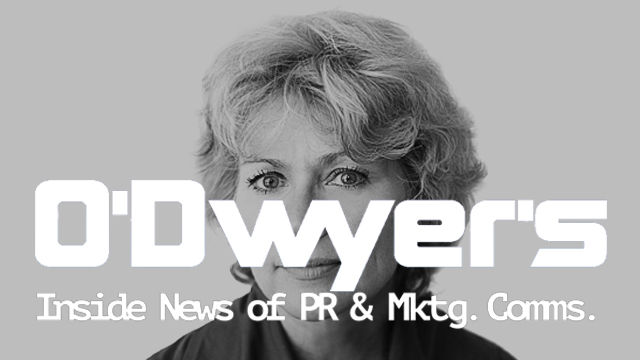Integration is about input, not output.
O’Dwyer’s – July 7, 2017
By Karen Seamen
There are two reasons our PR practice won 17 awards in just about a month.
One is a different take on that vastly overused word, integration. The other is a laser focus on success – and a different take on what constitutes success.
Firms say they’re integrated but what does that really mean? They asked someone at a sister agency to review their work or their “output” and give advice. Or they’ve made sure their output works across channels.
At C-K, we’ve flipped it. Since PR is core to C-K, we know the key to integration isn’t just in the output, but the input. Traditional PR shops have been turned on their heads trying to figure out this model and they are scrambling to catch up. At C-K, we aren’t feeling those growing pains since integration is what we have practiced for 118 years.
PR is about harnessing data and using analytics, using media planning knowledge, search metrics, journey planning tools and the finesse of creative for storytelling. That’s the kind of input that makes all the difference.
The guardrails are off PR. There are no more swim lanes and limitations. PR has a seat at every table. PR is no longer a sidebar. And, PR thinking can come from other team members. So our PR ideas are infused and focused by multi-disciplinary data, and analytics.
That’s C-K’s integration.
Let’s talk about success. C-K doesn’t measure success by impressions or changes in perceptions. Positive feelings about a brand or likes just aren’t enough. They only have a peripheral impact on success. Our key PR metric for success is behavioral change that delivers trackable action.
Today, client margins are too thin and costs are too high to be satisfied with changes in consumer perceptions alone. It has to result in an action. Our PR practice is dedicated to delivering on that. Of course, perceptual metrics contribute, but in the end, we need to deliver an action.
And that actually goes back to input. To achieve behavioral change you need to have the data.
We recently had a celebratory breakfast for our award wins and created a list of people who were involved in making the wins possible. It included people from every department. That’s by design.
The “Big is Here” campaign for the Milwaukee Public Museum is an example of how design works for us. A PR staffer created the campaign idea (a “Jurassic Park”-style dinosaur attack on Milwaukee – minus the deaths). It was rolled out and developed by people from every part of the agency, who worked together in a war room to flesh out the campaign.
That may not sound revolutionary – but when you see a creative director suggesting media ideas for a “PR idea” or a group of writers poring over museum attendance data, it’s different from anywhere else. Plus we crushed cars and hatched a 12-foot egg. The campaign resulted in us doubling the museum’s net profit goal and membership sales.
It’s an exciting time to be in PR – the old rules don’t apply. PR is involved in everything with everyone. PR uses all the resources that are available and works as a broader team and drives quantifiable behavioral changes. In this economic environment, that’s what is required. When this is accomplished in scale, PR is an integral part of the marketing communication budget and often becomes the driver of all communication to follow.
That’s a big difference. And that’s C-K PR without guardrails.
More News
- June 23, 2017 The C-K June 2017 playlist.
- June 13, 2017 Former C-K Create intern wins Collegiate Effie Award.
- June 6, 2017 Takeaways from Google Marketing Next 2017.
